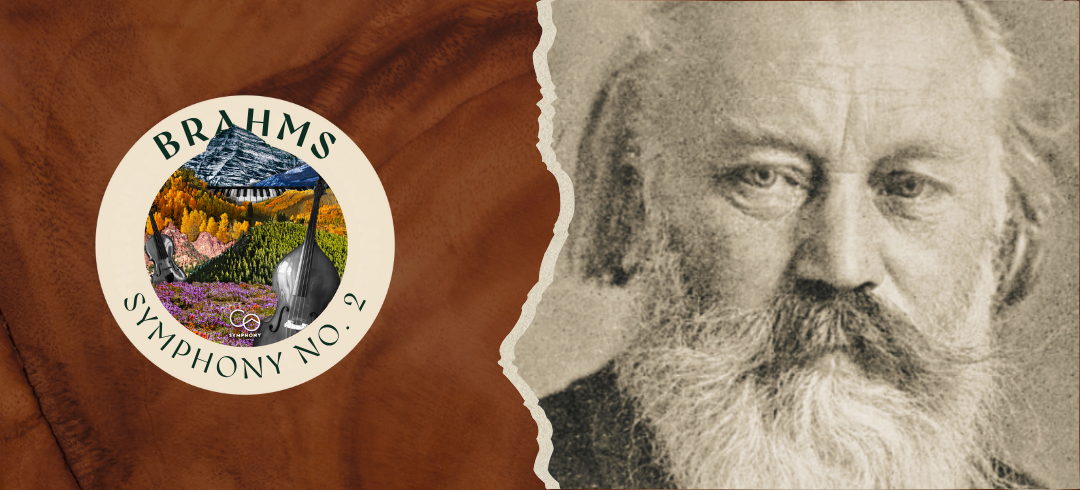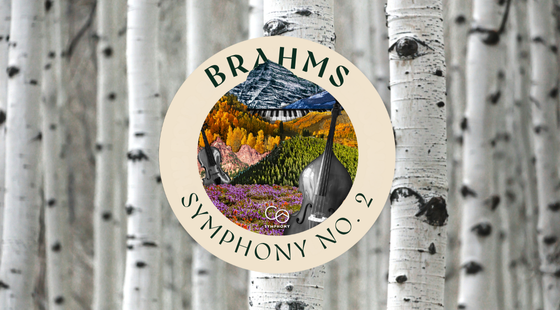How a creatively unburdened Brahms flourished with his Second Symphony
When Johannes Brahms finally unveiled his First Symphony in 1876, the world heard the weight of history pressing down on every bar. He had labored for nearly fifteen years under the shadow of Beethoven, anxious that anything less than perfection would fall short. The result was monumental: a work of grandeur and struggle that critics dubbed “Beethoven’s Tenth.”
Barely a year later, Brahms seemed to have shaken off that burden entirely. In the summer of 1877, he escaped to the idyllic village of Pörtschach in southern Austria, where the hills rolled toward shimmering lakes and birdsong filled the air. “So many melodies fly about, one must be careful not to tread on them,” he wrote to a friend. Within months, he had completed his Second Symphony, a work that glows with warmth, ease, and pastoral charm.
But if the music itself is luminous, Brahms’ words about it were anything but. In his typically sly fashion, he misled even his closest friends about the character of the new symphony. He told Clara Schumann it was “quite elegiac,” joked to Elisabeth von Herzogenberg that the score should be bordered in black, and teased his publisher that the piece was so melancholy it required the orchestra to wear mourning bands. To anyone listening, the Second Symphony must have sounded like an impending tragedy. Instead, when it premiered in Vienna that December, audiences were greeted with Brahms’ sunniest and most lyrical creation.
A Symphony of Light
From the very first notes, Brahms’ Second Symphony feels like a breath of fresh alpine air. The opening theme unfolds gently, as if the music itself is waking up with the sunrise, before bursting into warm, glowing melodies.
The slow second movement dips into deeper emotions with shadows and light weaving together in thoughtful contrast before giving way to the playful third movement, where a simple oboe tune suddenly transforms into a lively dance.
By the finale, Brahms throws caution to the wind: the orchestra surges with energy, the melodies soar, and the whole piece races joyfully to a triumphant, brass-filled finish.
“The stream of invention has never flowed so fresh and spontaneous in other works by Brahms, and nowhere else has he colored his orchestration so successfully.”
Felix Weingartner, conductor
Reception and Legacy
The Vienna premiere left audiences astonished. Expecting storm and struggle, they instead heard music of springtime freshness and lyrical abundance. Listeners demanded an encore of the third movement, and critics likened the piece to Beethoven’s “Pastoral” Symphony, filled with the bloom of flowers, birdsong, and warm breezes. Brahms himself admitted it “sounded so merry and tender, as though it were especially written for a newly wedded couple.”
Not everyone was convinced. Some critics, still enamored of Brahms’ monumental First, sniffed that the Second was “simply pretty.” But time has proved otherwise. With its effortless invention, luminous orchestration, and balance of depth and delight, the Second has become one of Brahms’ most beloved works, and the one he conducted most often.
Felix Weingartner, one of the great conductors of the early 20th century, perhaps put it best: “The stream of invention has never flowed so fresh and spontaneous in other works by Brahms, and nowhere else has he colored his orchestration so successfully.”
Sunlight after the Storm
If the First Symphony was Brahms’ monument to struggle and perseverance, the Second was his answer in song: a work where shadows give way to sunlight, and gravity yields to grace. It remains a shining reminder that even the most serious of composers could be touched by joy, and that sometimes, the greatest surprise of all is happiness itself.
Hear Brahms Second Symphony Performed Live
November 21-23, 2025
Concert Repertoire
SMETANA The Moldau
PIAZZOLLA The Four Seasons of Buenos Aires*
—INTERMISSION—
BRAHMS Symphony No. 2 in D major, Op. 73
*feat. Kerson Leong



